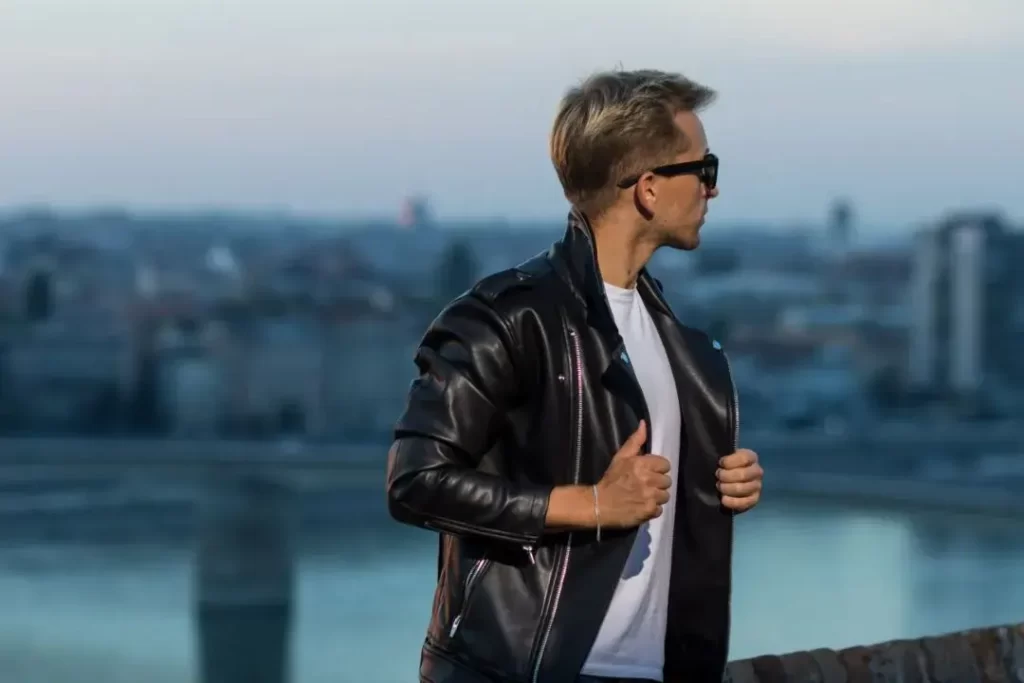What is a puffy jacket
Unveiling The Mystery Of What is a puffy jacket? What Makes it So Special Than Other Jackets? Let’s Find out! “ Learn what is a puffy jacket, How is it made, and the best ways to wear a puffy jacket flawlessly Do you ever wonder what makes puffy jackets tick? Or perhaps you need some advice on making it a style statement? Whatever your curiosity, this blog seeks to answer them all. Welcome to your comprehensive guide on understanding what is a puffy jacket, what is it made up of and how can you style it in the best way possible. What is a Puffy Jacket? When we hear puffy jackets, what comes to your mind may vary in design but the inherent nature stays the same. A puffy jacket or a “down jacket” as it’s commonly known, is essentially a coat specially designed with an insulated exterior for providing extra warmth. They are characterized by their quilt-like sections filled with insulating materials, which gives them their puffed-up appearance. From humble footprints in the high Eastern mountains to their embodiment in modern fashion, the puffy jacket has wrapped itself around a unique narrative. History of Puffy Jackets The narrative of puffy jackets spans miles and generations, deeply rooted in the versatile heritage of exploration and outdoor extreme conditions. It dates back to the seventh century, the Mongolian tribes were authentically “inventing” a precursor: clothes impregnated with feathers and wool for warmth. The demand and evolution of this attire across the period till today say a whole lot about humanity’s exciting capability for invention and innovation. What are the Different Materials Used in a Puffy Jacket? Puffy jackets retain their lofty appearance and heat captivity capability mainly because of their insulating materials. Manufactured typically with a polyester fabric on the outside, the sophistication lies not in just the fabric itself, but layers of it coupled with high insulation material! Let’s dive in: The Outer Shell Layer: Mostly made up of water and wind-resistant material like nylon or polyester to keep moisture and cold harsh winds at cut-off. Insulation Layer: The ‘down feather’ filling creates air pockets that trap body heat and blocks external cold air from reaching you. Lately, synthetic materials are also used due to their outstanding resistance to moisture and uncompromised warmth offering even when wet. Inside Lining: Crafted carefully with soft & skin-friendly materials, balances moisture namely polyester fabric, granting an all-day-around comfort wrapped in cozy warmth. Types of Puffy Jackets With a rise in popularity, the landscape of puffy jackets has expanded more vibrantly than ever. Some commonly seen varieties include Down Insulated Jackets: Known for phenomenal warmth-to-weight ratio, ideal in a less wet and cold climate. High-quality goose or duck down provides unbeatable durability, thus boasting long-lasting performance. Synthetic Insulated Jackets: Offer incredible heat retention while providing excellent moisture resistance making them your go-to choice for rigorous activities or damper climates. Hybrid Puffy Jackets: Combining both down and synthetic insulation in one, these are specially designed to optimize warmth and moisture resistance where you need it. Exploring the Puffy Jacket Styles Puffy jackets do more than just keep you warm. They are a fashion statement in their own right and come in a wide array of colors, patterns, designs, and fits. Here’s a sneak peek at the most in-trend styles: Long-length Puffy Jackets: Offering extreme warmth by covering more of your body, these are a perfect choice for frosty weather or for people who feel particularly cold. Bolero-style Puffy Jackets: If you’re inclined towards something unconventional and modish, you’ll appreciate the unique focal point a bolero-style jacket can bring to your outfit. Puffer Vests: Especially suitable for transitional climates, they offer core warmth while enabling mobility because no sleeves translate to better movement of arms. Quilted Puffer Jackets: The main characteristic is the classic ‘quilt-like’ design with visually segmental patterns due to the various insulating pockets. Metallic Puffy Jackets: For an added pulse of contemporary styling, you can’t miss it with a metallic shade. They swathe the puffer silhouette in ethereal glamour. Print Puffy Jackets: Ranging from mild to wild, there’s a plethora of print pattern options to make your jacket get-up dope and interesting. How to Style a Puffy Jacket? Styling Puffy Jackets perhaps mires in more dubious territory than other garments – given their ‘puffiness’. Wondering how to work it? Here’s every style-inspo you need. Shell Out For Layers: Matching your favorite sweater tucked into high-rise jeans with your puffy jacket is the easiest and most sophisticated monochrome look. Take It Up a Notch: A wool skirt and knee-high boots teamed with a color-popping puffy jacket. An unusual but impressive combination. Embark on Edgy: Pair your jacket with ripped jeans and rugged boots. This look’s outdoorsy and audacious vibes play harmoniously with your adventurous nature. Rock The Chic Look: Slipping on a tight mini dress underneath a chic cropped puffy jacket can portray an effortless balance between feminine curve-flattery and laid-back nonchalance. Embrace Vigor: Combining your workout pants and fitness wear with a puffy jacket is a practical approach that significantly boosts the coziness quotient. How to Care for Your Puffy Jacket? Storing and cleaning your puffy jacket effectively ensures that it can provide peak performance and maintain its aesthetic appeal for several seasons. Here is a meticulous guide about the same. Cleaning: Puffy jackets demand careful maintenance. Stick to a gentle cycle with cold water when machine washing and use a front-loading machine to avoid unintended damage. Don’t rush while air-drying and, keep it away from high heat that could damage the fabric and down insulation. Several sports outlets vend specific down-safe detergents if you are looking for specialized cleaning. Always remember to read your jacket’s tag for specific instructions the manufacturer might have suggested. Storing: During periods of long-term storage, the last thing you’d want is for your jacket to lose its puffiness by being compressed. To retain the volume of your jacket intact don’t pack it away into its stuff











